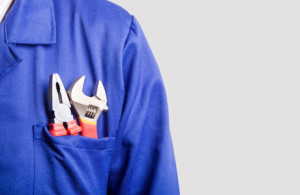I tend to make decisions quickly, often more quickly than my peers. Rest assured, it is not because I am smarter, or think faster. In fact, I make more mistakes than most. I think it is because I evaluate the risk of decisions differently than many.
Right or Repairable?
All too often, we delay making a decision until we have all the facts, and check them twice. Why is that? I think it is because we want to make the right decision. Seems admirable. However, I think that may not be the best criteria in this fast paced world. I think a better decision making criteria would be, “Is this decision repairable?” Not all decisions carry the same weight, so inherently some are more risk than others if we get them wrong.
As you may have heard before, I believe learning is defined as the ability to detect and correct error. If I make the wrong decision and I don’t get the results I wanted, that is an error. Repairability of a decision is really based on whether I can learn from this (and fix it) or not.
How will I know?
Rules to determine if this decision is repairable:
- Will I get good feedback? If we decide to change our church service times from 11:00 to 10:30am, I can watch the attendance trends to see if that had an affect, positive or negative. That is, if I track attendance carefully. Do you have a mechanism to provide feedback on this decision? If not, then the fear of getting it wrong is very valid.
- How long until I know I made a mistake? When probes are sent into space, they are programmed with a specific trajectory that will be in line with the mission. Many times, those missions take years to complete. If it takes that long to realize we sent the probe in the wrong direction, that is a decision I would consider not repairable. However, preparing a budget for the next year I know I will get continuous feedback every week I count contributions. As a result, that feedback can help me make small repairs before I get too off track.
- What will I lose in that time if I got it wrong? As humans, we like to employ catastrophic thinking as often as possible. At a high level, this means when we don’t know an outcome, we imagine the worst possible result. Coded into us for survival purposes (i.e.: rustling grass could be wind or a tiger), it is a healthy tool. However, we now imagine the worst case scenario when making every decision. Instead, think about what is the most likely worst case, in the length of time it takes us to get feedback. I was considering moving a person into a new position and didn’t know if they could be successful there. If they failed, the company would suffer, it could put their career in jeopardy, which adds strain to their family, which could… We decided even if they failed miserably, we were going to check in soon enough to minimize any real damage so it was worth the risk.
It is easy to see how this repairable criteria can drive our technical decisions, like budgeting, service times, or space probes. What about relational decisions, like whether to give an employee negative performance feedback? It all comes down to culture. Do you have a culture where mistakes are celebrated and relationships stay intact? If you do, then take a risk and know you can fix it. If not, then ask yourself what about your culture is preventing this?
Your Next Move
Think of a decision that is delayed waiting for more information and confirmation. Consider the points above and make a decision. When you make the decision, inform others of your plan to make it repairable. Do that now, and practice every chance you get!


Good article Dave. For me this article is an encouragement for action!
Cool article, It was practical.